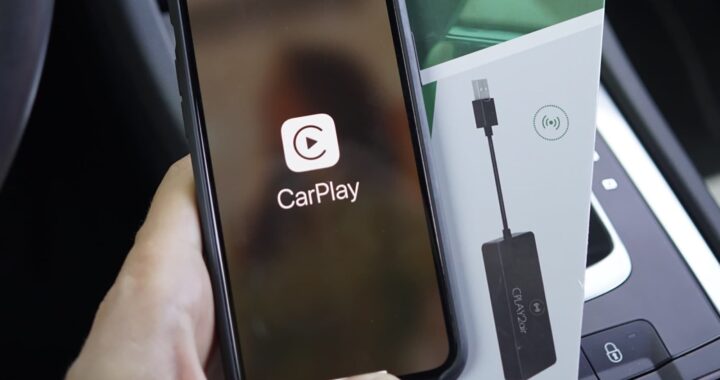The Impact of Technology: Student Engagement and Success
Engagement is often thought of as solely the current attention level students have in a classroom setting. The real definition spans much larger than that to encompass the overall investment a student has in their learning. Academic achievement is largely influenced by a student’s willingness to persevere and overcome obstacles; teachers play a fundamental role in creating an environment that promotes learning and a genuine sense of pride in the effort it takes to reach objectives.
But in 2021, millions of students globally have become dispersed. They are not able to physically engage with their instructors or peers, and their motivation to study has dwindled with a lack of engaging activities and stimulating instruction. Despite teachers’ best efforts, there’s only so much that can be done through a Zoom classroom.
For college students, earning a degree now seems detached and, at times, meaningless. Without any tangible experiences to mark their progress, learners may feel underwhelmed, anxious about their future and worried they aren’t ready to enter the workforce. This guide will examine how technology can empower learners, increase engagement and lead to greater success both in school and after graduation.
Technology-Based Activities to Increase Student Engagement
Teachers have to get inventive if they want to keep their students invested while learning from home. Even after everyone is able to return to the classroom, technology has become an integral facet of every modern student’s life. This means that the traditional method of teaching communicates material as effectively as it once did; and the cut-and-dry nature of most assignments do not suit contemporary learners’ mindsets. They are fluent in the digital world and feel more comfortable typing than they do writing.
Some schools are still fighting to hold onto the old ways of education, but what students really need is pedagogy that embraces the technology of their time. By integrating technology into student engagement efforts, instructors are able to not only improve learning outcomes but also help pupils build skills they’ll need to communicate and thrive in the future. Examples of technology-based activities include:
- Keeping a blog to write assignments
- Video or digital photography journals
- Creating infographics to build subject mastery
- Incorporating video games into learning exercises
Preparing for the Future
Students need to keep up with modern trends if they want to be as employable as possible post-graduation. A student loan calculator can calculate annual expenses of students and help them build a budget and make better choices with their student loans. Education is an investment, and learners need to ensure they’re getting their money’s worth. Digital skills are no longer a plus but rather a necessity. By embracing technology in the classroom, educators can help young adults build in-demand hard and soft tech skills that will help them find work in an extremely competitive job market.
Education Technology Experiences to Help Students Learn and Grow
Thanks to the power of the internet, subjects can come to life and leave meaningful impressions on learners. Rather than passively engaging with content through reading and lectures, education technology is rooted in building experiences. These experiences can take place in virtual environments that adapt to each learner, ensuring that they are given the right level of challenge and reward for all their efforts.
Beyond simply memorizing information to pass exams and assignments, memories are formed. These memories lay the groundwork for future experiences that will reinforce and expand educational foundations. As an instructor, you want anyone who comes into your classroom to leave feeling like they’ve taken something valuable with them. Educational technology makes that much more likely regardless of what subject you teach. Let’s look at some examples of educational technology in higher education.
Gamification
Games are no longer a fun complementary activity. They’re powering the future of learning across every grade level. We see a lot of educational games on the internet but before choosing a game we always look for product guides and recommendations and based upon them, choose the one which will level up our educational skills.. Education didn’t outright shun games when they first emerged in learning, but they were never taken as serious teaching tools. Today, game-based teaching and learning strategies motivate students to work harder and strive toward higher goals. The act of leveling up in the virtual world can carry over into the classroom with incentivized lesson plans and activity-driven instruction. Learning-based games can keep students’ motivation high by offering them a balanced mix of challenging questions and material they know. Rather than simply passing or failing, learners are encouraged to keep trying and rewarded for their efforts.
AI Learning Platforms
Artificial intelligence personalizes teaching and helps every student receive the exact level of attention and support they need. Generally, a teacher cannot assist each student individually, so they try to fill in as many gaps as they can without holding the entire class back. AI platforms identify students’ greatest challenges and automatically adapt to provide further instruction and reinforcement. Learners are able to move at their own pace, gain feedback in real-time and identify where they’re struggling more easily. This ultimately allows them to articulate their problems more clearly, reach out for help and develop stronger problem-solving skills.
Microlearning
Microlearning allows videos and interactive apps to build understanding with short-term lessons and activities. Although college semesters will still last the same amount of time, more information will be covered through blocks of learning. Instead of getting an extremely broad and, ultimately, thin understanding of a subject, students will develop more practical knowledge that’s able to be applied in a natural and more meaningful manner outside the classroom.
What Research Says About Technology in Education
Digital resources are expected to be naturally incorporated into learning, and the greatest challenge colleges face is being behind their students’ development. Teaching with technology can have an impact on how much a student takes away from the classroom; digital learning can improve understanding and fosters a greater connection to material that can lead to greater attention and emotional investment. Educational technology can help to deepen students collaboration and can help students to become more engaged; when the classroom is rooted in interaction, even just with an app, learners are more interested in the outcome. The education they glean can either be primary or secondary to the skills they acquire through the learning process.

 Stars-923: Unveiling the Mystical Cosmos
Stars-923: Unveiling the Mystical Cosmos  Buying Guide for Short-Throw 4K Projectors for Gaming
Buying Guide for Short-Throw 4K Projectors for Gaming  5 Best Wireless Apple CarPlay Adapters in 2024
5 Best Wireless Apple CarPlay Adapters in 2024  The Essential Role of Animated Explainer Videos in Tech Documentation
The Essential Role of Animated Explainer Videos in Tech Documentation  How Do You Apply Agile Testing Principles And Practices Across Different Domains And Contexts?
How Do You Apply Agile Testing Principles And Practices Across Different Domains And Contexts?  What Are The Benefits And Challenges Of Using Mock Objects In TDD?
What Are The Benefits And Challenges Of Using Mock Objects In TDD?